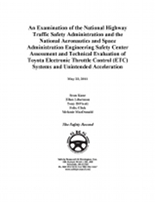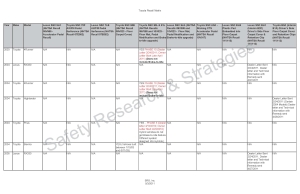John Biello was not ready for the cruise control malfunction that sent his 2009 Tacoma careening down an exit ramp, then skidding into a rollover last June. But Tuesday, when he and his wife Diane appeared before the Commonwealth of Massachusetts Division of Insurance Board of Appeals to fight an automatic rate increase mandated by state law, Biello was fully prepared to educate the hearing officer about Unintended Acceleration problems in Toyotas.
As the great tide of cash washes from Toyota into the pockets of the U.S. government, attorneys, research institutions and some death and injury victims to settle fines and claims without an admission that the automaker’s electronic throttle control system is defective, owners like John and Diane Biello represent those left to deal with Toyota’s mistakes on their own. The Rehoboth, Massachusetts couple had no counsel, just a compelling account and a binder of public documents showing that Toyota Unintended Acceleration problems continue today and that juries and technical experts recognize what the National Highway Traffic Safety Administration has not: Toyota’s badly designed electronic architecture can cause UA.
“I knew that there had been this unintended acceleration problem. I had read about it a couple of years ago,” John Biello says. “But I thought it pretty much done. I thought the problem was fixed and I didn’t really think my vehicle was involved because I got no Unintended Acceleration recall notices.” Continue reading

